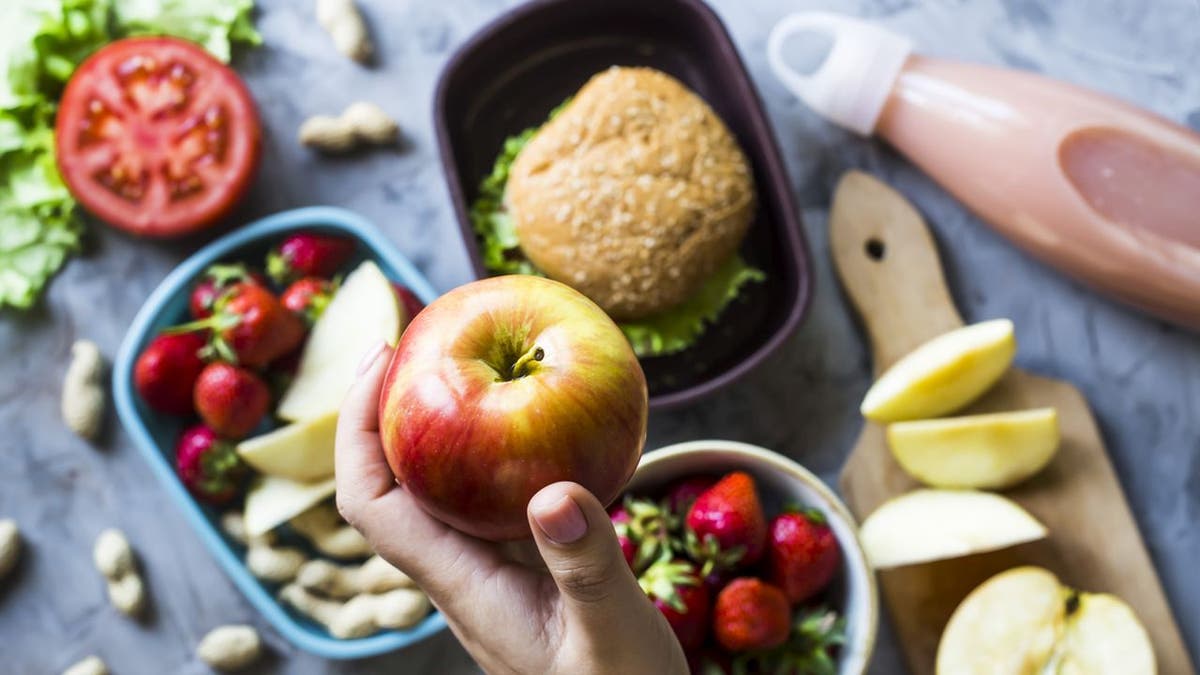Fox News Flash top headlines for April 22
Fox News Flash top headlines are here. Check out what's clicking on Foxnews.com.
Schools throughout America serve more nutrient-rich foods than restaurants, according to researchers at Tufts University.
A new study conducted by the university’s Gerald J. and Dorothy R. Friedman School of Nutrition Science and Policy published findings that analyzed the diets of 40,000 adults and 21,000 children between 2003 and 2018.
In the final year of the study, more than half of meals that were served in U.S. restaurants were determined to have the "lowest nutritional quality."
THESE FRUITS, VEGETABLES HAVE HIGHEST PESTICIDE CONTAMINATION AMONG FRESH PRODUCE, STUDY FINDS
Sixty-five percent of restaurant-prepared meals for adults were labeled as being "poor quality" while 80% of restaurant-prepared meals for children were labeled the same.
In schools, only 24% of the meals served were said to be poor in nutritional quality. However, the study did acknowledge that the Healthy Hunger-Free Kids Act passed by the federal government in 2010 likely influenced its result due to the legislative policy’s strengthened funding for child nutrition programs with the USDA.
SWAPPING RED MEAT FOR PLANT PROTEIN MAY LOWER SOME CARDIOVASCULAR RISKS, STUDY FINDS
Eligible food programs that play a part in providing nutritious foods for students include the School Breakfast Program and National School Lunch Program as well as the Summer Food Service Program when school is not in session. The foods that are served through these programs typically provide whole grains, fruits, vegetables and legumes rather than sugar-loaded, refined or processed foods that are common in restaurants.
Data obtained from the 16-year study reportedly showed that "poor nutritional quality food consumed from restaurants" only declined from 85% to 80%. Schools on the other hand had dropped its poor nutrition rate from 57% to 24%.
AMERICANS WASTE HUNDREDS OF DOLLARS ON FRUIT EACH YEAR, SURVEY CLAIMS
Similarly, American workplaces and grocery stores have scaled down on the foods that have poor nutritional value – albeit by a small margin in those 16 years.
According to the study, consumption of nutrient-lacking foods went down in workplaces from 56% to 51% and while the same happened at grocery stores nationwide from 40% to 33%.

Schools throughout America serve more nutrient-rich foods than restaurants, according to researchers at Tufts University. (iStock)
CLICK HERE TO GET THE FOX NEWS APP
"Schools are now the single healthiest place Americans are eating. This finding is particularly timely given widespread school closures over the last year from COVID-19, and current efforts to safely and fully reopen schools," said the Friedman School’s Dean Dariush Mozaffarian, who was the senior author the study.
"Our results suggest substantial nutritional harms for millions of kids who have not been consistently receiving meals at school and must rely on other sources," Mozaffarian added. "These harms also disproportionately affect low-income, Black and Latinx children."
CLICK HERE TO SIGN UP FOR OUR LIFESTYLE NEWSLETTER
Not so surprisingly, the study also found that food trucks and entertainment venues served foods that lack nutrients at 44% for adults and 52% for children.




















